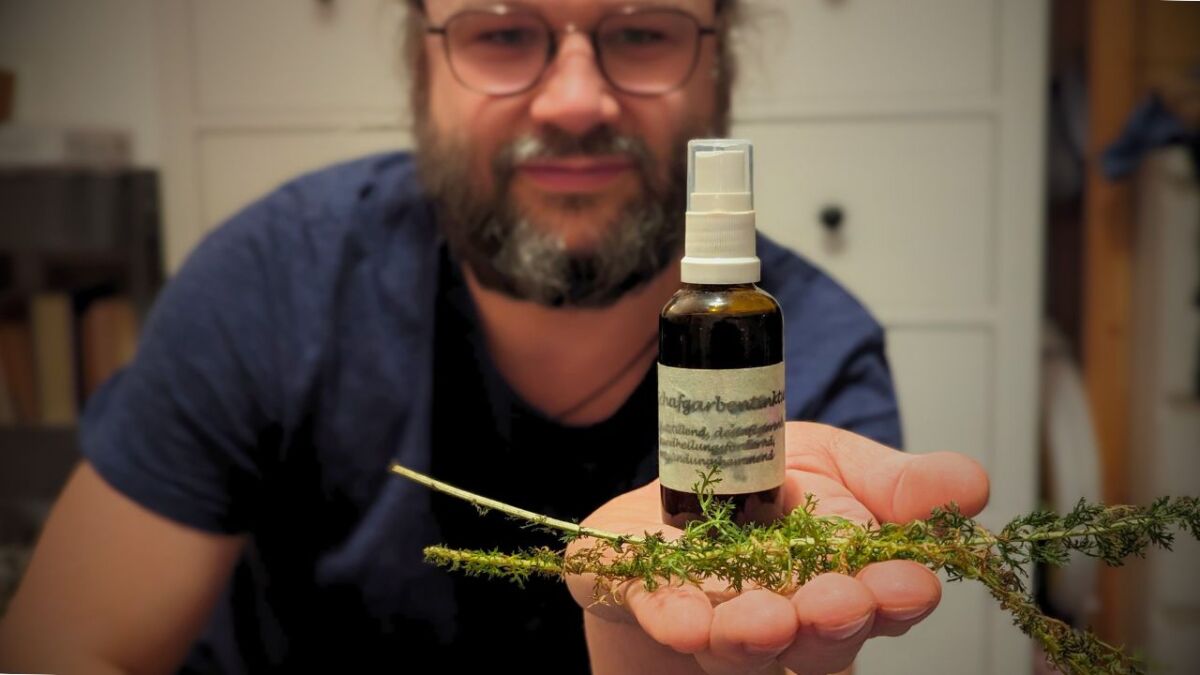
Yarrow: The Secret weapon for wilderness living
👉 The key facts from this guide
- Yarrow (Achillea millefolium) is a traditional medicinal plant and is valued in modern phytotherapy for its anti-inflammatory and antispasmodic properties.
- Yarrow prefers to grow in sunny areas, is tough and adaptable to various soils.
- Yarrow has finely segmented, feather-like leaves and flat umbel-like, mostly white flowers, blooming from June to October.
- During harvest, the optimal time is full bloom, dried plant parts can be preserved for up to a year and used for various home remedies such as teas and ointments.
- In the kitchen, for example, used in salads or herbal bread, yarrow imparts a tangy, slightly bitter flavor to dishes and contains important vitamins and minerals.
- In a survival context, yarrow can be practically applied, for example, as a hemostatic aid, repellent, or tinder; caution should be taken in identification to avoid confusion with toxic plants.:
Imagine yourself wandering through the forests and across the meadows, always searching for the hidden treasures of nature.
And there, among the grasses and wild flowers, you discover it: the yarrow.
She is so much more than just an inconspicuous plant by the wayside!
She is a piece of wisdom from nature, a gift that enriches and supports us on so many levels.
For a long time, I overlooked it, but once I got to know it, yarrow became my constant outdoor companion.
Your delicate leaves, resembling finely serrated feathers, the small white flower heads - I quickly realized that she is full of surprises.
The Essence of Survival
As a ranger and bushcraft enthusiast, I have always been searching for plants that could be useful to me in the wilderness.
And believe me, yarrow is a true all-rounder.
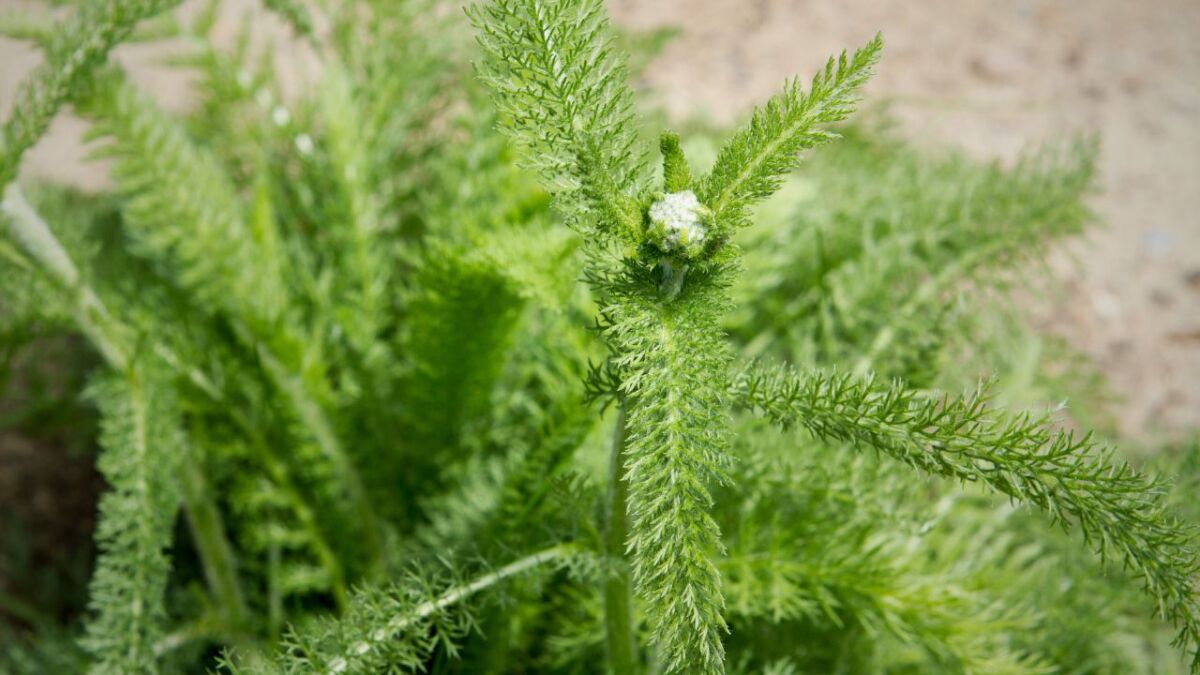
Not only does it serve as first aid in tricky situations, it also brings a wealth of benefits that I definitely want to introduce to you.
This plant shows us how diverse and powerful nature is - and how important it is to keep this knowledge alive and share it.
So strap on your backpack because I'm taking you on a journey of discovery into the world of yarrow.
Ready? Let's start the wilderness expedition!
Botanical profile of the yarrow
Imagine you are on a clearing, surrounded by pure nature.
The birds are chirping and the scent of wild herbs fills the air.
There you discover it: the yarrow. An inconspicuous powerhouse.

Your scientific name is Achillea millefolium.
The legend says that the hero Achilles used it to heal the wounds of his warriors.
(P. S. The German term "Schafgarbe" indicates that the plant is commonly eaten by sheep.)
But let's start from the very beginning.
Characteristics of the yarrow
- Leaves: Feather-like, divided into numerous narrow sections
- Flowers: Mostly white, sometimes pink, arranged in flat umbels
- Height: Can grow between 20 and 60 cm tall
- Blooming period: Usually blooms from June to October
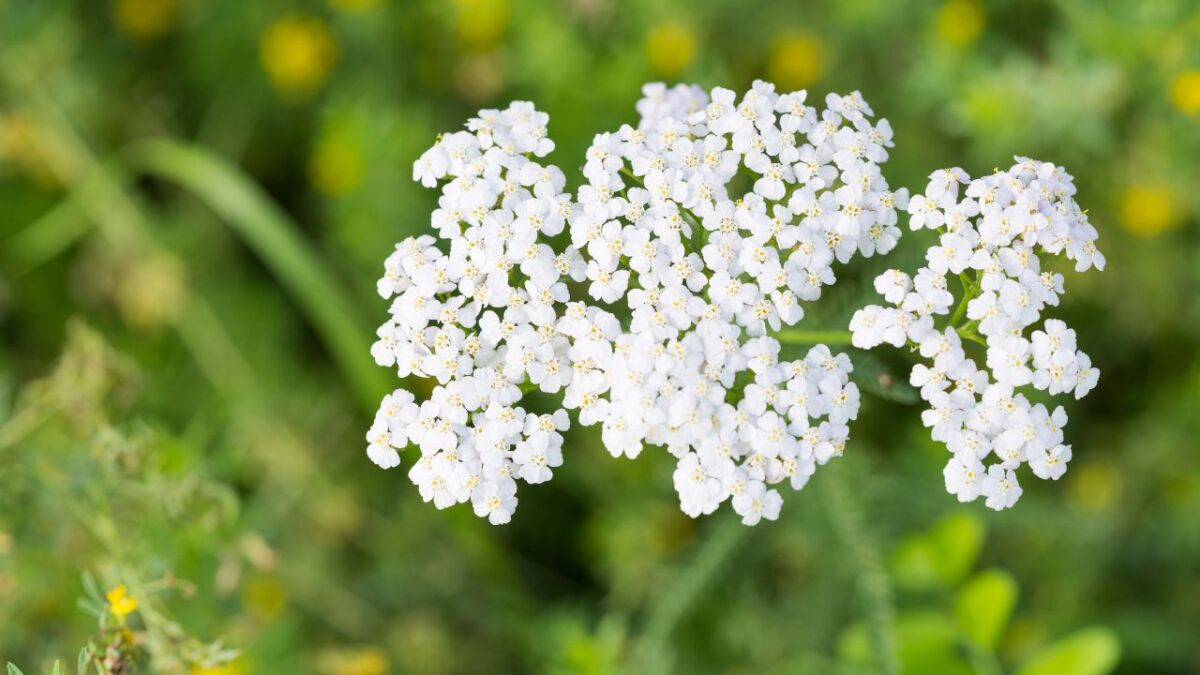
You're probably wondering, "How do I recognize them exactly?" Here's a little guidance:
- Leaf shape: Take a look at the complex leaves - they are the key to distinguishing them from toxic look-alikes. They have this unique, almost hair-like division that sets them apart from the crowd. Gentle, delicate, and detailed - a true masterpiece of nature.
- Flower scent: Come closer and take a deep breath. Their flowers have a strong, almost medicinal scent. Once you have smelled it, you will recognize it again and again.
- Location factor: It loves the sun and open spaces. Do you see a sunny meadow? That's where you should look.
- Soil: It is a true survivor. Whether nutrient-rich or poor - yarrow is undemanding and robust.
The saying goes
"Without women's herb and sheep's tongue, don't leave the house!"
That's how it used to sound in the villages. Women's herb and sheep's tongue, an old name for yarrow, shows how deeply rooted it is in our tradition. Respect and admiration - that's what this plant deserves.
Did you know?
The yarrow belongs to the family of Asteraceae. So when you stand in the field with it, you indirectly greet sunflowers and daisies.
Maybe you're thinking now: "What can I do with this knowledge?"
Quite simple: Take the time, seek them out, get to know them and identify them. Your nature explorer heart will beat faster, promised.
Read also
Plant portrait of sorrel - the vitamin C bomb from nature - If you are looking for a source of vitamin C, sorrel is an excellent choice. Learn more about the health benefits of this powerhouse plant.
The natural habitat: Where yarrow thrives
The yarrow, it is a true cosmopolitan of the flora. I have encountered it everywhere: from the lively bank of the stream to the golden fields.
It almost seems like she chooses the places that have stories to tell. And every time I see her, I know I am in a special place.
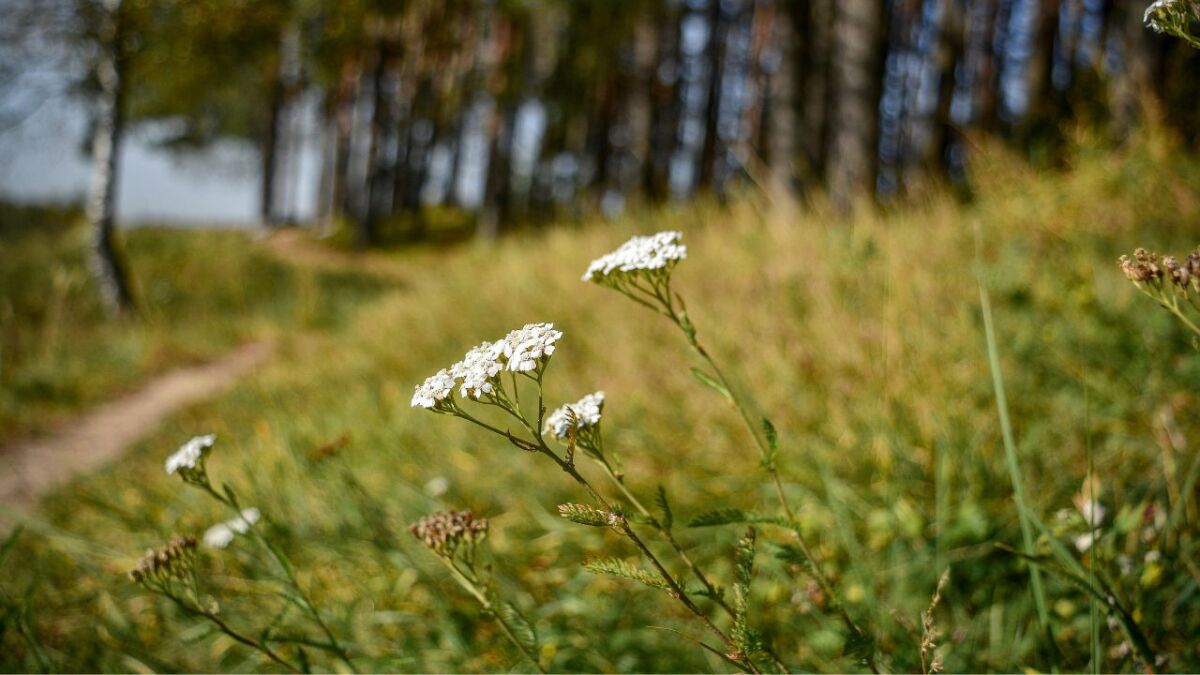
Flexible and Undemanding
One thing you need to know about yarrow: It's not delicate.
At home is where the sun gently kisses her leaves and the ground does not confine her feet.
You can find them in meadows and pastures, along paths, and even in your garden if you give them space to grow.
Where you will find them:
- Open landscapes: Expansive meadows and fields.
- Roadside: Typical of yarrow is its fearlessness next to our infrastructure.
- Clearings in the forest: Where the light breaks through the darkness.
- Your garden: Yes, it can also flourish here if you give it the freedom.
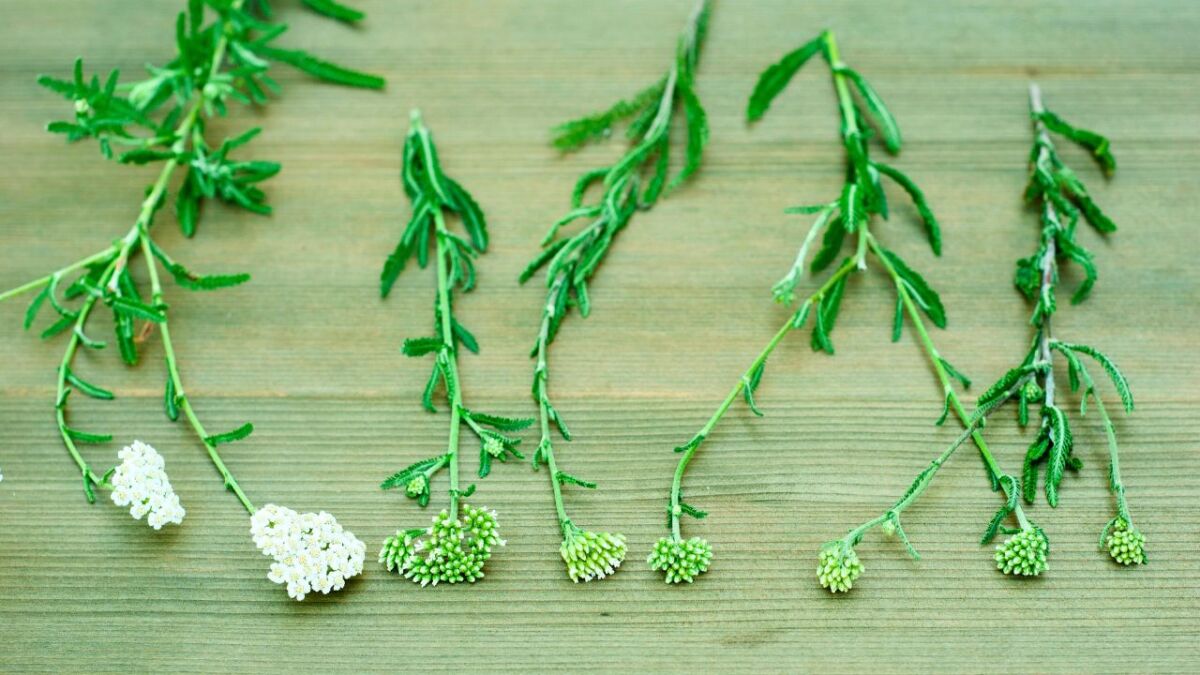
A crash course in soil science
Yarrow is tolerant, but it prefers light, well-drained soils. Although it tolerates nutrient deficiency, it shows its full splendor in a well-nourished soil.
Here is a small table to illustrate it:
| Soils she loves | Soils she avoids |
| Sandy-loam | Heavy & wet |
| Rich in humus | Compacted |
| Calcareous | Highly acidic |
And the yarrow is not alone. It lives in a network.
Bees, butterflies, and other insects visit them for their nectar. They are part of a larger whole, a community.
And that's exactly what I love about the wilderness - how everything is interconnected.
Harvest and Storage: Properly Collecting Yarrow
Hand on heart, how often have we carelessly walked past the little treasures of nature?
The yarrow is just waiting to be discovered by us. But wait! Not just like that - we approach the task with care and respect.

The Art of Harvesting
The best time to harvest yarrow is at full bloom - usually during the sunny midday hours when its essential oils are most concentrated.
- Tool: A sharp knife or scissors are sufficient.
- Technique: Cut the flower stems just above the ground leaves.
- Quantity: "Take only what you need", that's my motto when collecting.
Drying and Storage
Dried yarrow (mainly the flowers) is a miracle cure for many ailments and the basis for all sorts of remedies.
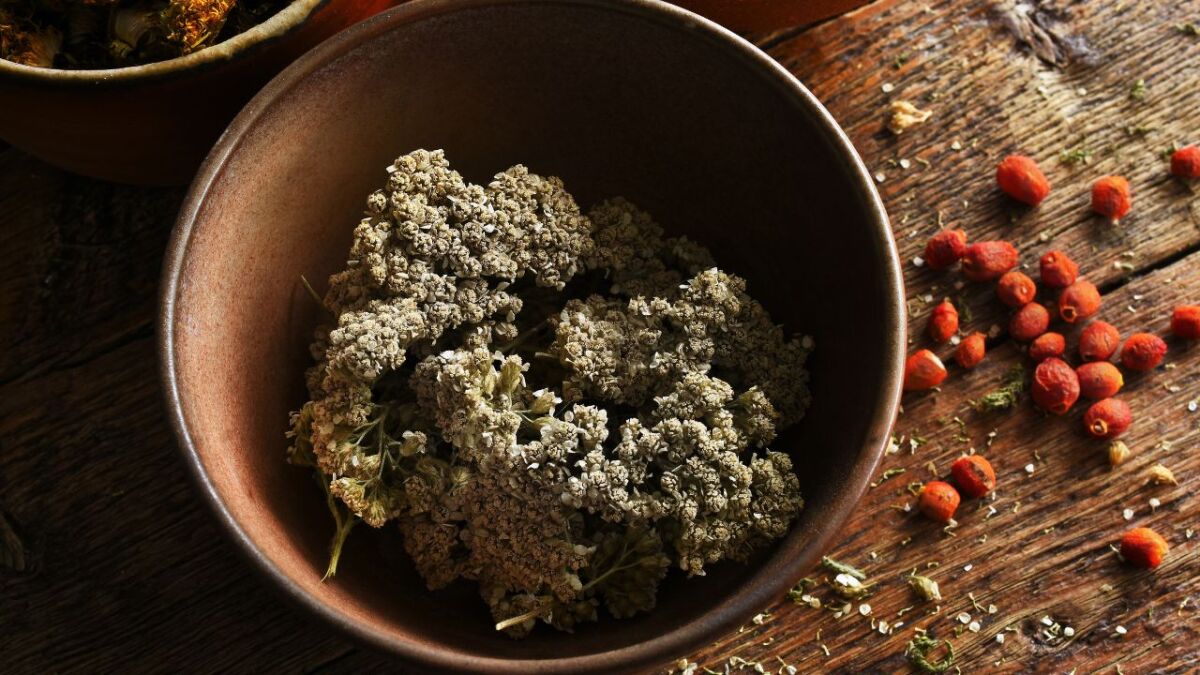
Step by Step
- Airy places: Choose a well-ventilated location to prevent mold formation.
- Tying bouquets: Bundle the stems together and hang them upside down.
- Light protection: Store in a dark place to preserve the valuable ingredients.
Durability - What you need to know
Dried yarrow can remain effective for up to a year and sometimes even longer if stored properly.
Use glass containers or linen bags and store them in a cool, dark place.
My personal tip
I often bring yarrow with me when I venture into the wilderness. A small jar of dried flowers for tea or a homemade salve as a first aid measure.
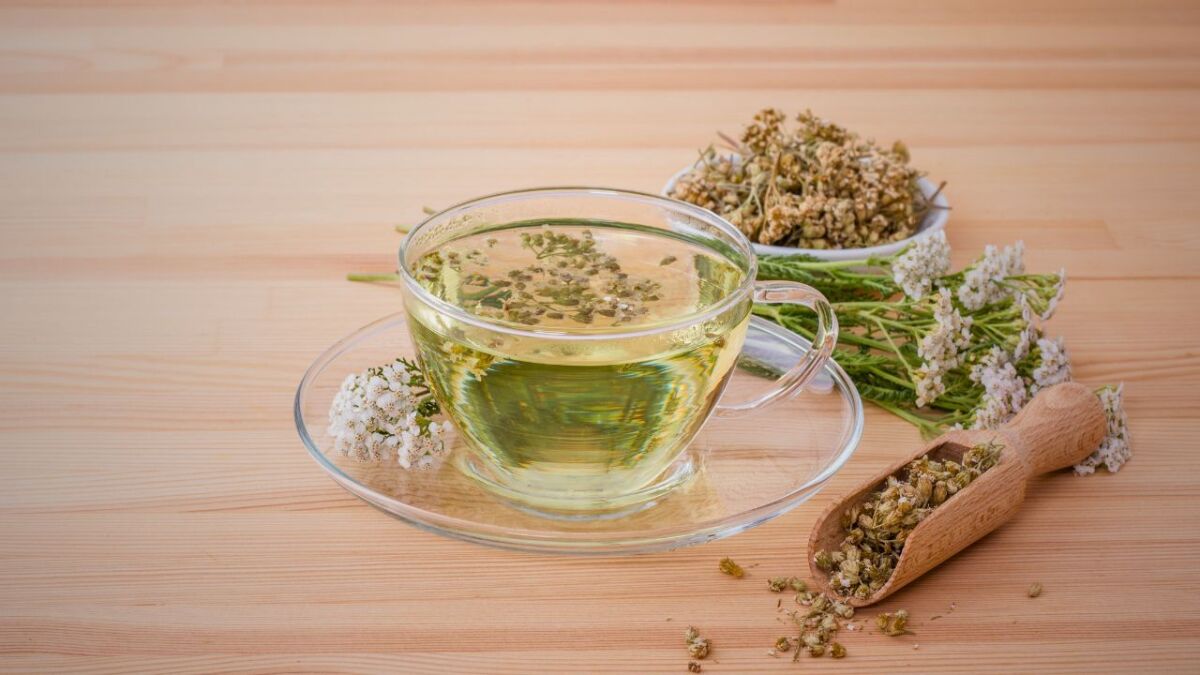
Healing Powers of Yarrow: Traditional and Modern Applications
Nature is full of surprises, and yarrow is one of its hidden gems.
In it, centuries-old wisdom and modern knowledge are combined. Let me show you why this plant should not be missing in your natural home pharmacy.
A traditional all-rounder
Yarrow in use in folk medicine is as diverse as its locations. It has been used as a remedy for everything - from digestive problems to wound healing.
Here are some of their proven qualities:
- Digestive: Ideal after a hearty meal at the camp.
- Anti-inflammatory: A blessing for minor scratches and abrasions.
- Pain-relieving: Headache after a long march? Try a tea.
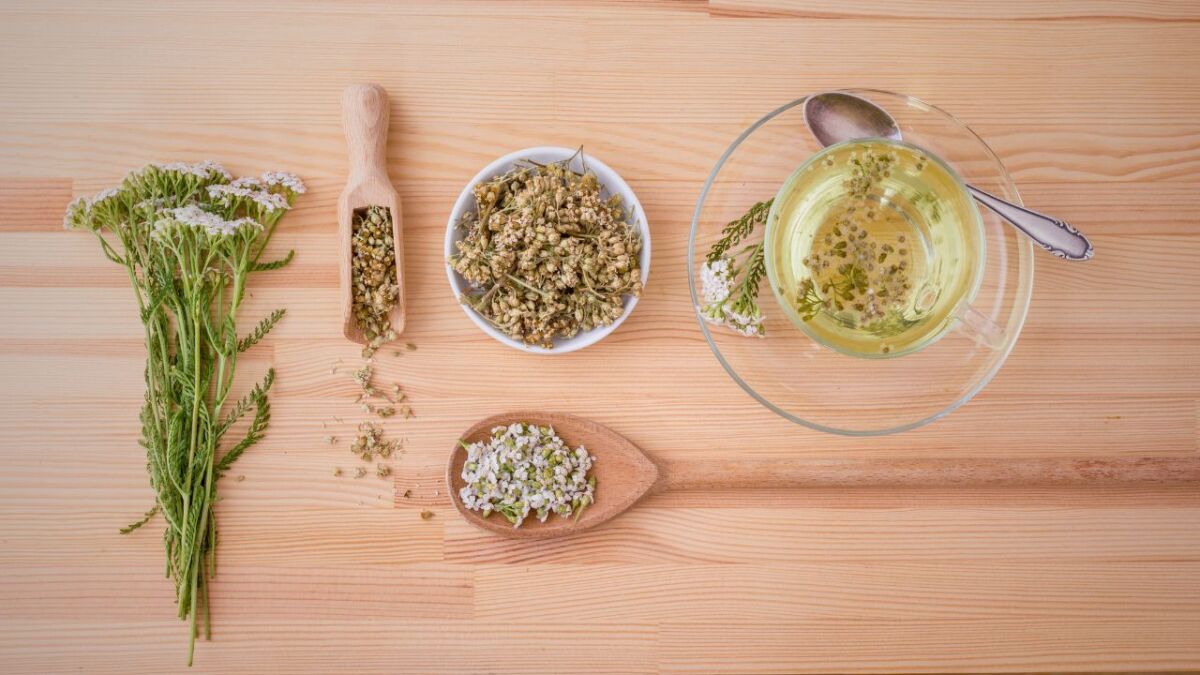
Modern science nods in agreement
The research has also examined yarrow and confirmed its anti-inflammatory and antispasmodic properties. Did you know that…
… some active ingredients of yarrow are being used in the pharmaceutical industry to make their healing power accessible to a wider audience?
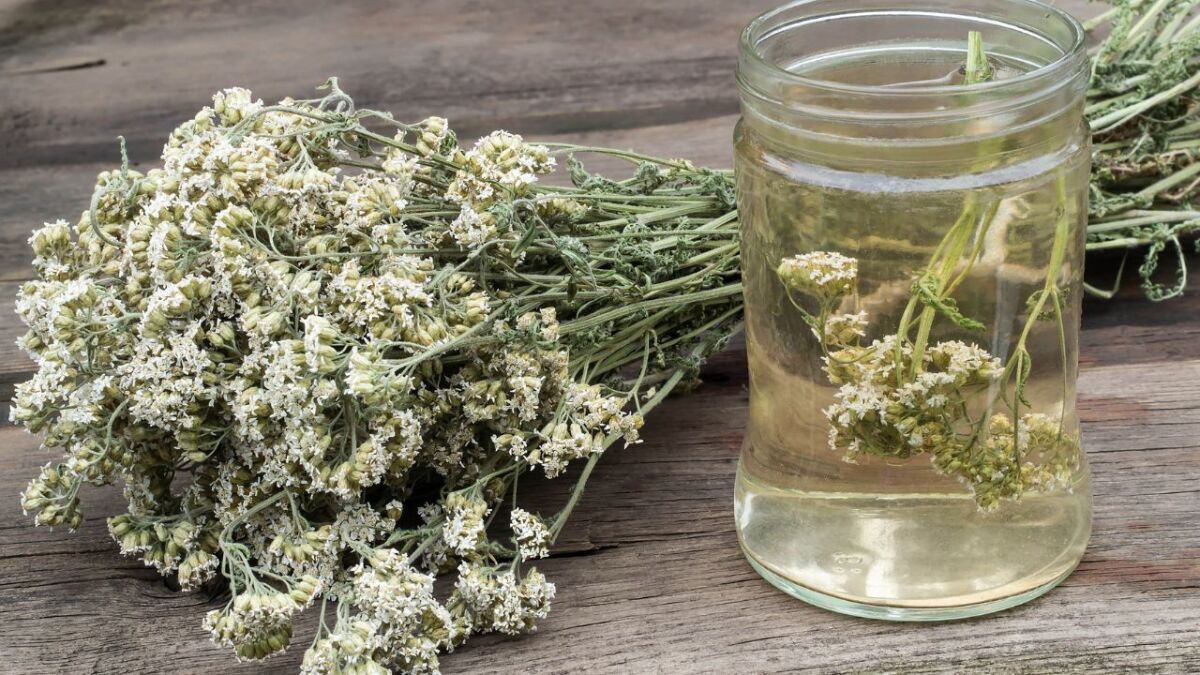
Areas of application you should know
- Menstrual discomfort: Alleviates cramps and discomfort.
- Minor cuts and insect bites: Supports healing and keeps infections at bay.
- Stress and sleep difficulties: Calms the nerves and promotes sleep.
Bring nature into your home
I have a small supply of yarrow in my home.
You never know when the next little ailment will appear. With yarrow, I can approach it in a completely natural way.
You want to delve deeper into the world of medicinal plants? Then check out my comprehensive article "Medicinal Plants for the Backyard Pharmacy" and expand your knowledge about the power of nature.
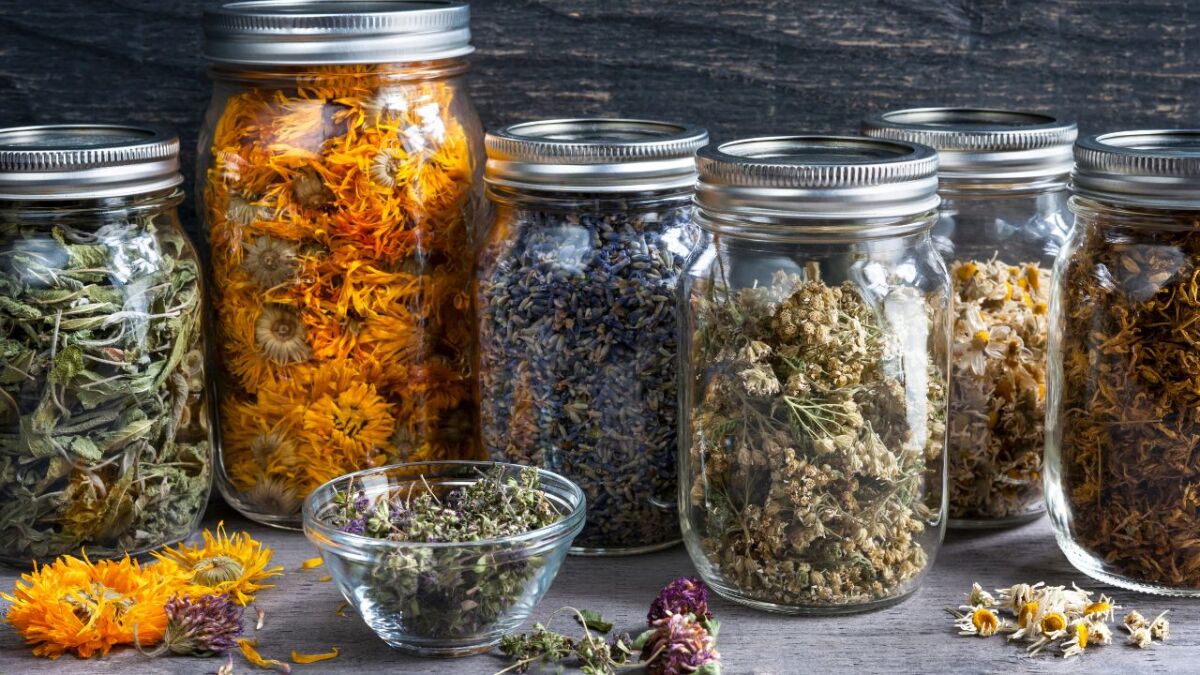
Yarrow in the Kitchen: A Spice from Nature
There I stand, in my outdoor kitchen, with fresh yarrow in my hand - ready to give my wilderness menu an extra dose of nature.
Have you ever thought about spicing up your camp kitchen with wild herbs? Yarrow is just the right choice!
Why yarrow should end up on your plate
She may be unassuming, but when it comes to taste, she's a real heavyweight.
The yarrow brings a spicy, slightly bitter note to your dishes - a taste explosion that you shouldn't underestimate.
Here are the reasons to love them:
- Taste: Herbal, with a hint of bitterness; perfect for salads and stews.
- Nutrients: Packed with essential vitamins and minerals.
- Versatility: From salad dressings to herb butter, it adds the finishing touch to everything.
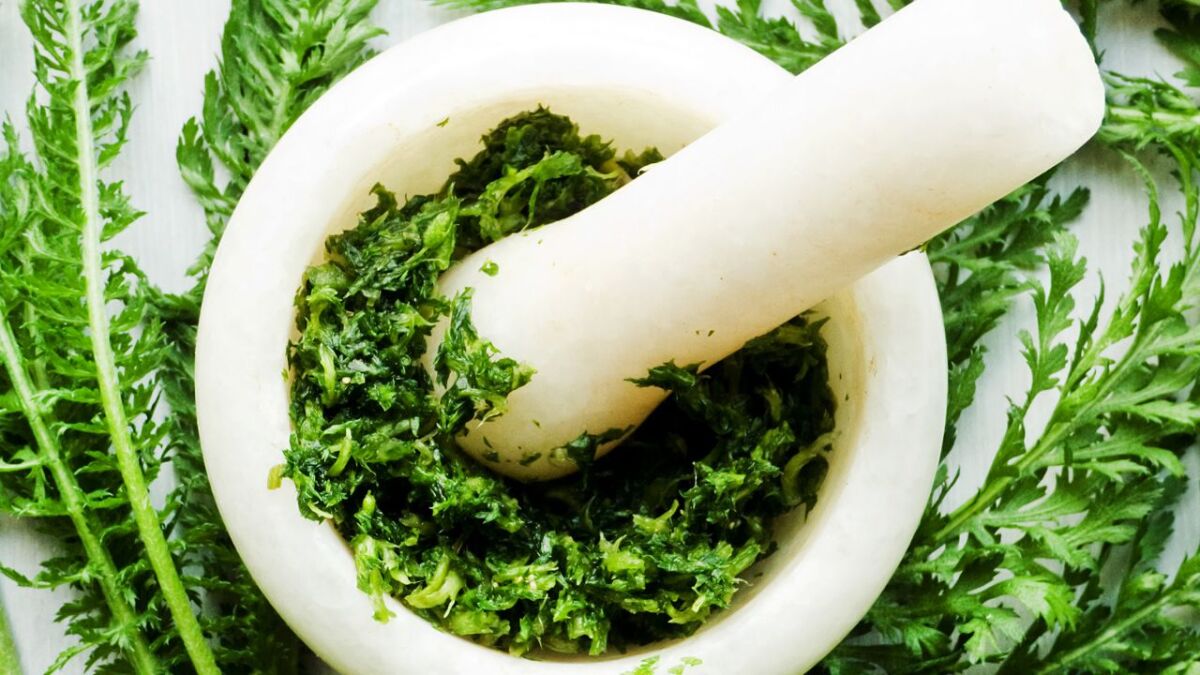
From Field to Pan - a Short Guide
- Young leaves: The young leaves are more tender and milder in taste. Perfect for fresh food and salads.
- Flowers: The flowers can be both decorative and aromatic. Sprinkle them on soups or mix them into dough like a bread dough.
- Seasoning: Use them as a dry spice. Simply dry, grind, and make space for them in your spice rack.
Kitchen Tips from First Hand
I, personally, love baking yarrow in herb bread. The subtly bitter note gives the bread a wild kick.
Have you ever made a wild herb butter? Add yarrow - your taste buds will thank you.
Homemade Natural Remedy: Yarrow as a Medicinal Plant
Out in the wilderness, far away from pharmacies and supermarkets, it is invaluable to be able to take care of yourself.
What if I told you that yarrow has the potential to be your all-natural first aid helper?
Unpack your adventurer's kit, today we're making our own natural remedy.
Ointments and tinctures made from yarrow: The tools of nature
The healing power of yarrow should not just remain in old books, it can also change lives today, in your hands.
- Herbal ointment: Perfect for skin irritations and minor injuries. Simply mix yarrow with oil and beeswax.
- Tincture: Ideal for internal discomfort. Let yarrow steep in alcohol, and you have a homemade remedy.
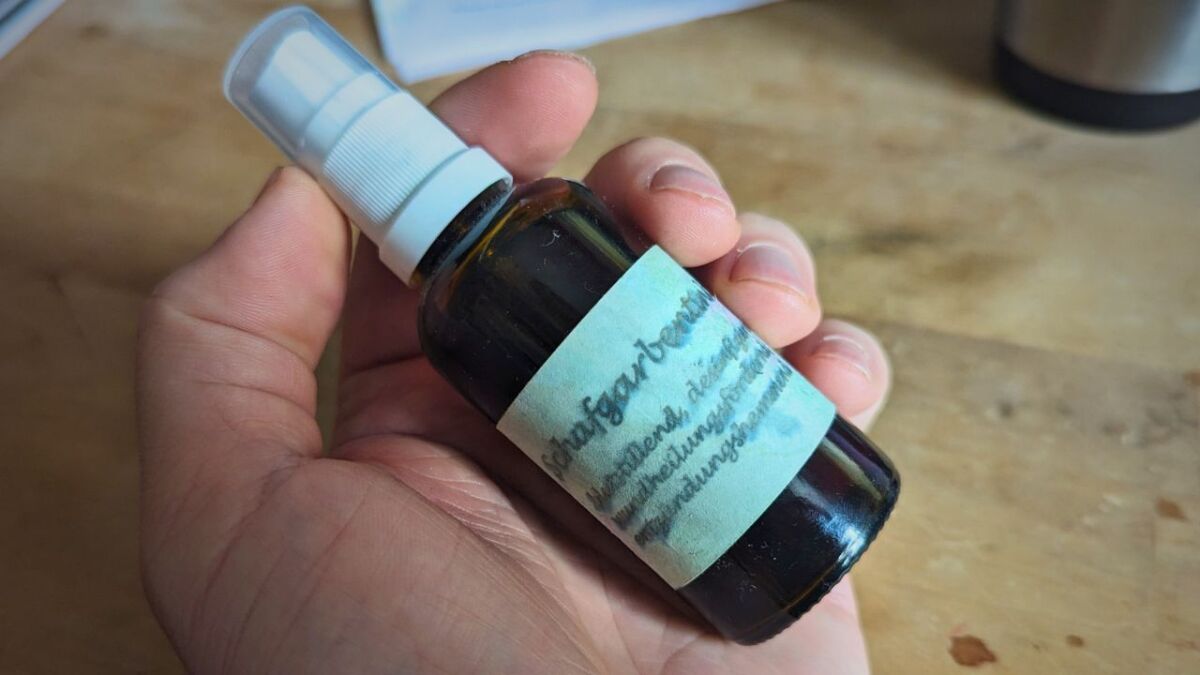
How to cook the magic potion
- Harvest: Choose the strongest yarrow.
- Preparation: Chop the plant parts and put them in a glass. Cover the yarrow with at least 40% vol. Alcohol.
- Extraction: Let the yarrow release its active ingredients in alcohol or oil for 4–6 weeks.
- Movement: Shake the glass briefly every day to help dissolve the substances.
- Filtration: Strain out the solid components, use only the liquid.
- Enrichment: Mix the filtered oil with beeswax for ointments.
- Bottling: Fill it into sterile containers.
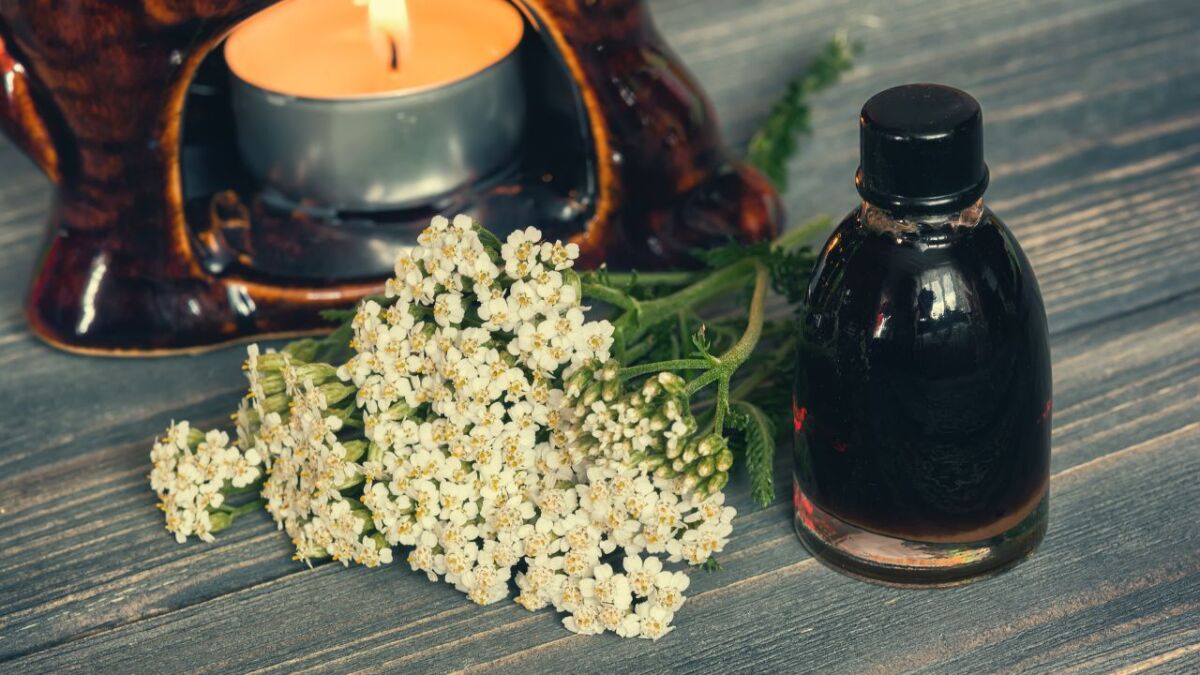
Tea as a loyal companion
A simple tea can sometimes work wonders. Whether it's against discomfort or simply for enjoyment after a strenuous hike - a hot yarrow tea is good for body and soul.
My travels through the forests have shown me: knowledge that can be shared is more valuable than gold.
I have seen awe according to my friends when I came with my homemade yarrow ointment - straight from the heart of nature.
Also read
Collect these 11 edible wild herbs in spring - which wild herbs give you the necessary power now - Learn how easy it is to identify the eleven most common edible wild herbs in spring and what you can do with them. These wild herbs bring power.
Yarrow as a Survival Aid: Utilization in a Survival Context
The sun is already low, and I am still in the middle of nowhere. It flashes through my mind: the yarrow in my backpack could be more useful to me than I previously thought.
In the wilderness, she becomes a universal artist - here I'll show you how.
From the wound to the mosquito bite
Yarrow is not only known for its healing properties, it also has practical applications that will surprise you.
In times of need, creativity counts, here are my applications:
- Hemostatic: Ideal for small cuts; crush a few leaves (to release the juice) and apply directly to the wound.
- Repellent: Mosquitoes avoid their smell. Crush leaves and apply to the skin.
- Firestarter: Dried stems and leaves easily catch fire - perfect for the evening campfire.
- As a bandage: Fresh leaves as a makeshift wound dressing.
If you ever find yourself in a tight spot, the true value of such plants becomes apparent. I have witnessed firsthand how a little knowledge and improvisation can make a difference.
One day, I got injured far away from the trail. Without a first aid kit, I was on my own.
With pressed yarrow leaves, I was able to stop the bleeding and protect the wound until I returned.
Dangers and Risks of Confusion
As much as I appreciate yarrow, it is important to take a closer look, as confusion can have serious consequences.
In the vast world of herbs and wild plants, traps await the unknowing.
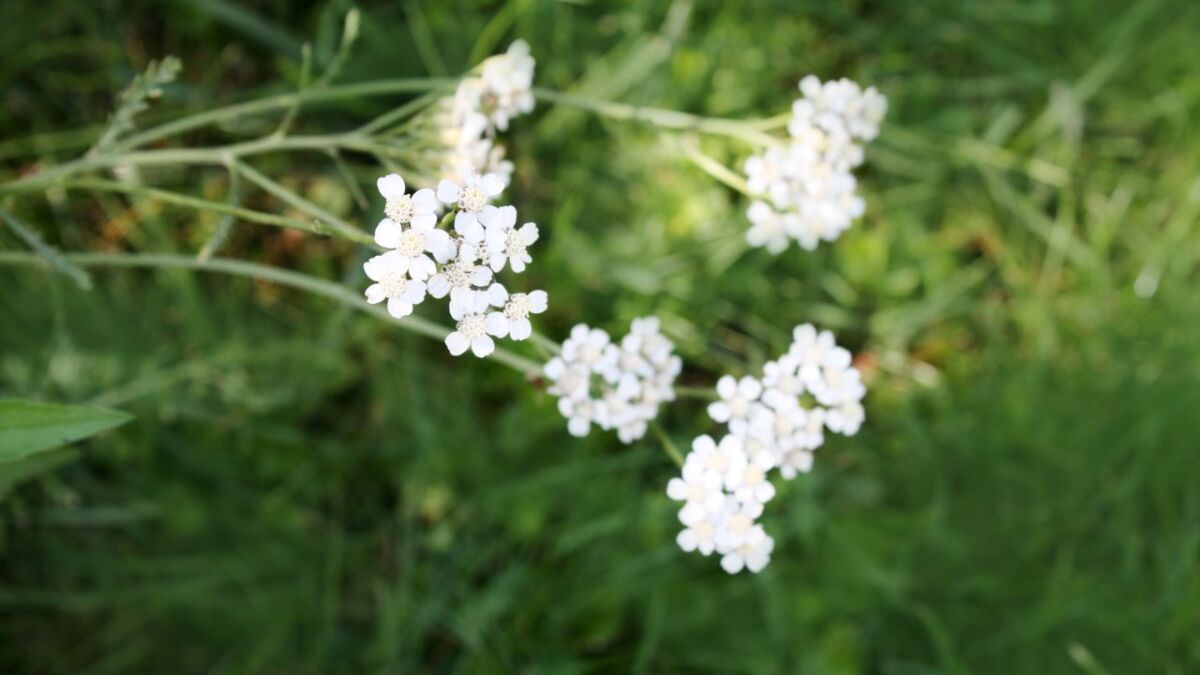
Not everything that is green is yarrow
Some plants look very similar to yarrow, and some of them are not exactly friendly to our body. Did you know, for example, that …
- … the poisonous spotted hemlock is often mistaken for yarrow by laypeople because of the similar flowers?
- … the highly poisonous giant hog weed can also be mistaken for yarrow due to its similar flowers (caution, contact with skin is already toxic!)?
- … the meadow foam also looks like yarrow, but is not poisonous?
The meadow foam is rather harmless, as the plant itself also belongs to the edible plants and is not poisonous.
Here are some tips on how to stay safe:
- Check leaf structure: Yarrow has very finely segmented leaves.
- Study the flower: The flat flower heads of yarrow are characteristic.
- Consider the location: Hemlock prefers moister conditions and often grows near ditches and streams, unlike yarrow, which prefers dryness.
Play it safe: Identifying yarrow by its leaves is ideal. They clearly distinguish themselves from the leaves of the poisonous look-alikes.
The leaves of the yarrow are long, delicate, and grow alternately.
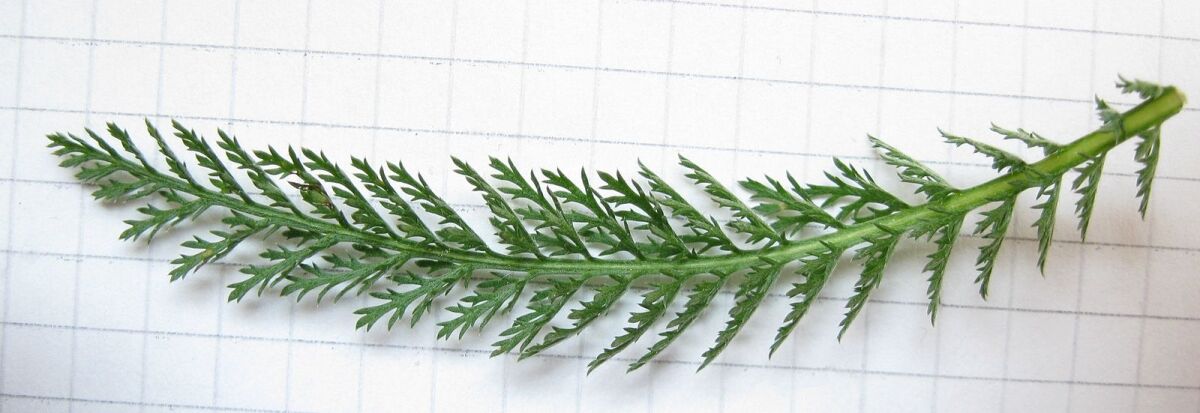
Reading the signals of plants
Nature speaks its language. Yarrow tells you with its strong, spicy floral note: "Here I am!" While Hemlock remains quiet and inconspicuous.
In addition, the scent of yarrow is pleasantly sweet.
My advice: Always double check
I once witnessed someone carelessly plucking a plant and putting it in their mouth. Fortunately, nothing serious happened, but it could have turned out differently. Be mindful, nature doesn't always forgive.
Read also
9 Recipes with Wild Herbs for Camping and Outdoor - These 9 delicious recipes with wild herbs bring the taste of the forest to your next camping trip. From crispy bread to flavorful soup.
Questions and Answers about Yarrow
In the midst of the silence of the forest, you feel the curiosity as it dances around your thoughts. "What can yarrow really do?"
Nature is an open book, and today I want to read you a few pages.
Questions upon questions gather like leaves in autumn. Does yarrow have any side effects? How do I use it safely? Can I combine it with other herbs?
Can yarrow be used on children?
Yes, but with caution. Yarrow can be used in small amounts and under supervision in children. However, it is important not to consider it as a panacea. Always consult a specialist if you are unsure.
Is yarrow safe for expectant mothers?
Caution is advised here. Yarrow should be avoided during pregnancy as it stimulates blood flow to the uterus and can lead to complications.
How do I recognize the best harvest time for yarrow?
The best time to harvest yarrow is in the summer when it is in full bloom. Ideally, you should gather it at noon when its powers are strongest.
Are there any side effects when using yarrow?
Side effects are rare, but they can occur, especially if you are allergic to Asteraceae. It is advisable to pay attention to possible allergic reactions during the first application and to stop using it immediately in case of intolerance.
I once had a conversation with an old herbalist. She told me:
The questions are the roots of knowledge.
And she was right. Every question you ask takes you deeper into the secrets of yarrow.
With this little FAQ, I hope to have answered your questions about yarrow. Always remember to act in harmony with nature and its wisdom.
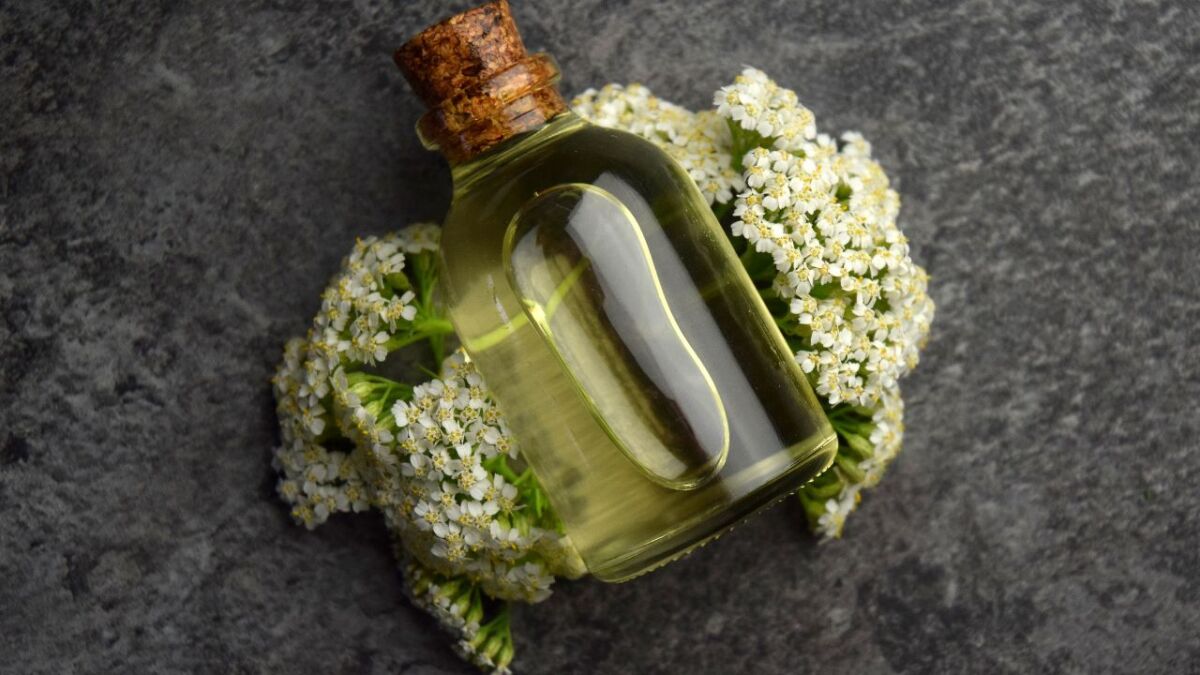
Further Resources and Expert Tips
After delving so deeply into the secrets of yarrow, it feels like you've found a new friend in nature.
But our learning journey doesn't end here. There are countless resources out there just waiting to be discovered by you.
Collect more knowledge
Nature never sleeps, and neither should our thirst for knowledge.
Books, workshops, online courses - we live in a time when information is just one click away.
Here are a few recommendations:
- Survival Compass: This website here is a resource with many guides on plants. Take a look in the category "Plants and Fungi".
- Books:
- In-person courses: Look for workshops in your area or online about medicinal plants and bushcraft.
- Online courses: Distance learning courses, like the Wild Impulse Program by me, provide insights and details on herbs and edible plants.
- Experts: Follow bushcraft experts and survival experts on social media or on their blogs.
The Community - Your Second Teacher
Nothing is as valuable as sharing knowledge and experiences.
Join online forums and local bushcraft groups. This way, you connect with like-minded people and learn from each other.
Continuous Growth
"You never stop learning" - this old wisdom always accompanies me. Every wildflower, every mushroom, every trace - they are teachers who guide us through the world.
And please keep in mind, The Survival-Kompass Magazine is packed with advice and guides to help you expand your knowledge practically.
Take a look at my guide "Edible Plants: this emergency food can be found in the forest (list + pictures)" to deepen your understanding and skills.

Sources for the guide
- Fleischhauer, Steffen Guido. "Essbare Wildpflanzen: 200 Arten bestimmen und verwenden." AT Verlag. (Dieses Buch bietet detaillierte Informationen zu essbaren Wildpflanzen, einschließlich der Schafgarbe.)
- Chevallier, Andrew. "Die große Enzyklopädie der Heilpflanzen." (Bietet detaillierte Informationen zu Heilpflanzen, einschließlich der Schafgarbe.)
- Pahlow, Mannfried. "Das große Buch der Heilpflanzen: Gesund durch die Heilkräfte der Natur." (Ein Buch, das sich mit der traditionellen Nutzung und den volksheilkundlichen Aspekten von Heilpflanzen, einschließlich der Schafgarbe, beschäftigt.)
- https://de.wikipedia.org/wiki/Gemeine_Schafgarbe
-
https://www.mdr.de/mdr-garten/pflanzen/schafgarbe-staude-achillea-millefolium-essbar-heilpflanze-100.html

Author of the guide
Martin Gebhardt
Hey, I'm Martin. On my blog, you will learn the basics and numerous details about living in the wild. I think survival, bushcraft and the good life in nature are the keys to happiness. Find me here on Instagram or on YouTube. You can find more about my mission on the About Me page.
Was this guide helpful?
21 people found this guide helpful.
5.00 out of 5 points (21 Ratings)
Comments (0)
This post may contain affiliate links. So if you click on the links and make a purchase, I will receive a small commission at no additional cost to you. Click here, to learn more about it.


